Down the Figure 7 - Pomona, 2010ISBN: 9781904590255 |
|
|
They say the past is another country, with its own strange customs and mysterious rituals. None stranger and more mysterious than the secret world of childhood. Take a time trip back to the black-and-white 1950s, to a northern cotton town struggling to emerge from a decade of shortages and rationing, of make-do-and-mend. But the war and its aftermath cast a long shadow. Gangs of feral youth, inflamed by the exploits of Hollywood tough guys, fed on Movietone News and the tales of dads and uncles who served in the Forces, are still fighting the Nazzies and the Nips - and each other - in the bits of wasteland between the streets and houses. It all seems very innocent (even the fumbling exploration of sex behind the garages) and indeed it is. Until Terry Webb's uncle turns up, ex-Desert Rats, and brings a piece of the war home with him. |
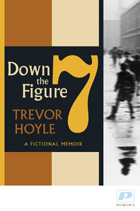 |
|
|
|
Rule of Night - Pomona, 2003 [re-issue]ISBN: 1-904590-01-2 |
|
|
If the sixties were swinging, the seventies were the hangover: darker, nastier, uglier, especially if you lived on a council estate in the north of England. Rule of Night was first published in 1975 and has since become a cult classic. It pre-dates the current vogue for 'hard men' and 'football hoolie' books by 25 years. Rule of Night creates a chillingly detailed world, where teenagers prowl rainy fluorescent-lit streets dressed as their Clockwork Orange anti-heroes. The backdrop is provided by Ford Cortinas, Players No.6, the factory, the relentless struggle to maintain hope. Read reviews:- |
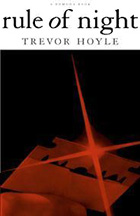 |
|
|
|
I Padroni Della Notte - Baldini Castoldi Dalai, 2006ISBN: 8884907942 |
|
|
Italian edition of Rule of Night. Pubblicato per la prima volta nel 1975 e mai uscito in Italia, I padroni della notte è uno stupefacente e autentico resoconto della vita del sottoproletariato urbano inglese e della violenza giovanile nei primi anni Settanta. |
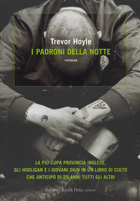 |
|
|
|
Mirrorman - Virgin Books, 1999ISBN: 0-7535-0385-9 |
|
|
A powerful cult, the Messengers, offers Frank Kersh, a death-row inmate a chance to escape and the fulfillment of all his desires. In return he must defuse or destroy any threats to the cult's plans of world domination. One such threat comes from Cawdor, whose forefather escaped the religious persecution in England in the 1770s, and interfered with a previous incarnation of the cult. Unfortunately for Cawdor he only has a limited amount of time to understand what is happening, and to destroy Kersh. "Trevor Hoyle is Britain's most exciting writer currently working in genre fiction and the more experimental reaches of the mainstream. Mirrorman, a 'what if' tale told on an epic scale, will keep you up way past your bedtime." - Nicholas Royle - Spring 1999. More reviews:- |
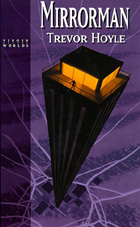 |
|
|
|
Blind Needle - John Calder, 1994ISBN: 0-7145-4252-0 |
|
|
Blind Needle starts as a traditional chase thriller, filled with believable horror: a convincing expose of civic corruption involving a nuclear installation in Cumbria, drugs, fraud and murder. On the run, wary of both the police and a mysterious figure he believes is stalking him, Peter Holford is given a lift one dark wet night by an attractive young woman, Diane Locke, divorced and hungry for sex. Holford is determined to seek revenge on the man who murdered his wife, but soon finds himself hunted by the vicious henchman of his intended victim. The conventional elements of the thriller genre soon give way to a deeper, darker exploration of the nature of identity and the fracturing of personality. "This is a novel that grabs you by the throat and pulls you down into bleak but completely convincing horror … a novel of dark and dangerous ideas." - Glasgow Herald. See Calder Publications website. Read reviews:- |
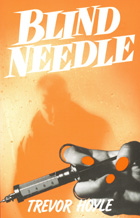 |
|
|
|
Vail - John Calder, 1984ISBN: 0-7145-4055-2 |
|
|
Vail is a black comedy set in a dreary, futuristic Britain. The work tells of how the title character loses both his wife and daughter in a highway accident and later arrives in London, where he is drawn into a sinister, scheming world. Populated by the off-beat, the bizarre, and the morally corrupt, the city defies conventional urban activity. While Vail seeks to sustain his belief in a larger order of things through much of the work, he is ultimately engulfed by the growing anarchy surrounding him. See Calder Publications website. Read reviews:- |
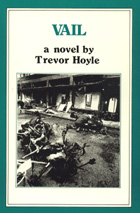 |
|
|
|
The Last Gasp - Crown, 1983 (US edition)ISBN: 0821715089 The Last Gasp - Grafton, 1990 (revised UK edition)ISBN 0-517-55084-9 |
|
|
British marine biologist Gavin Chase uncovers a potential global disaster in which the world is being drained of its oxygen supply as forests and oceanic microscopic plant life, the main suppliers of the planet's oxygen, dwindle away. When Chase and two other scientists attempt to notify the government and scientific community, they stumble upon a secret Russian-American plan to launch an "environmental war" in which three quarters of the earth's population would be exterminated in order to provide oxygen for the remaining population. This novel is currently under option by a Hollywood production company. "Trevor Hoyle succeeds in presenting - with awesome credibility - a vision of a man-made apocalypse. The Last Gasp is a landmark in the emerging field of eco-fiction." - Washington Post. More reviews:- |
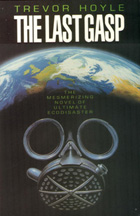 |
|
|
|
The Man Who Travelled on Motorways - John Calder, 1979ISBN: 0-7145-3790 |
|
|
During the long night drives and strange scenes set in Manchester, London and the South Lancashire mill towns, in service stations, pubs and hotels ... places, people and events are no longer what they seem: no actions are innocent. Everything threatens as the principal character slides into reminiscence and doubt until the 'secret underlife' takes on a nightmarish power of its own and the certainties of the objective world crumble to dust in his hands. Like J G Ballard and Kurt Vonnegut, Trevor Hoyle has brought the freedom and energy of science fiction to the traditional novel and has successfully produced a narrative form that is startlingly original, compulsively readable and can make the reader aware of a new reality that may often be close to his own experience as a driver. His novels with Calder - The Man Who Travelled on Motorways, Vail and Blind Needle - constitute a literature of modern mythology that move into the future. See Calder Publications website. |
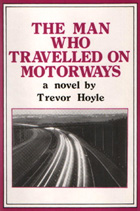 |
|
|
|
Seeking the Mythical Future - Panther, 1977ISBN: 586-04366-7 |
|
|
The first book in the Panther Science Fiction 'Q' Series. Christian Queghan is a myth technologist and a highly respected scientist on the planet known as Earth IVn. Like so many other worlds colonised generations ago, Earth IVn was created to be as much like Old Earth as possible, although Old Earth itself is now the stuff of myth and legend. In Seeking the Mythical Future, a machine has been developed that will project a researcher into one of the infinite number of possible futures of Earth IVn, with only a 50% chance of bringing him back again. Christian Queghan would be the ideal subject, and he cannot resist the idea of going where no man has gone before. |
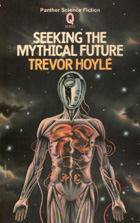 |
|
|
|
Through the Eye of Time - Panther, 1977ISBN: 586-04367-5 |
|
|
The second book in the Panther Science Fiction 'Q' Series. In Through the Eye of Time, a group of scientists attempting to duplicate the human brain choose that of Adolf Hitler as their prototype. Investigating the research, Queghan unveils an alternate universe in which Germany (as opposed to the United States) developed the first atomic bomb. Queghan's quest becomes to enter this other reality in an attempt to avert the threat it poses to the known reality. |
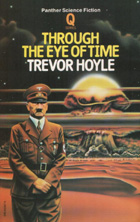 |
|
|
|
The Gods Look Down - Panther, 1978ISBN: 0-586-04368-3 |
|
|
In The Gods Look Down, the third volume of the 'Q' series, Christian Queghan is working with another scientist on decoding texts from ancient history. When he realises that his colleague is seeking to alter history using the results of the research, Queghan draws upon his ability to pass into alternate realities in an attempt to stop him. |
 |
|
|
|
Relatively Constant Copywriter - Northern Writers, 1972ISBN: 0-903-36200-7 |
|
|
From the cover blurb: Described as an "idiosyncratic fantasy", this is a nightmare vision of a world in which people live on the borderline of illusion and so-called reality. Turned down by 18 publishers, Mr Hoyle decided to take matters into his own hands and published the novel under his own imprint in a limited edition. Now you can judge for yourself. "There is a savagely absurd advertising meeting, funny quotes from girlie mags, comic sex case histories … genuine talent is at work." - Sunday Times. More reviews:- |
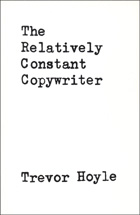 |
|
|
|
Short Fiction by Trevor Hoyle
You can read excerpts of the linked stories:
|
Ambit, Winter 2003 |
|
|
The Dying Art of Letter-Writing |
BBC Radio 4 Morning Story, 11/06/91; |
|
On the Embankment |
Double Space, Summer 1984 |
|
Done in Oils |
Pennine Magazine, October 1984 |
|
An Actor Prepares |
Artful Reporter, December 1983 |
|
A Visit to a Paper Mill |
New Yorkshire Writing, Spring 1978† [from the novel The Man Who Travelled on Motorways] |
|
Mind Rape |
Mayfair, August 1977 |
|
The Birthday Party |
BBC Radio 4 Morning Story, 15/12/77 |
|
Conversation in a Darkened Room |
Wordworks, Spring 1976 |
|
Transatlantic Review, October 1976† (Erotica Award winner) |
|
|
Fireweed, Autumn 1975† [from the novel Down the Figure 7] |
|
|
Itís a Great Life |
Montrose Review, July 1969 |
|
Foiled Again |
South China Morning Post, June 1968 |
|
[Afterword from the novel Rule of Night] |
|
|
The Tea-Cosy Man |
|
|
|
|
|
|
|
|
|
|
|
Nostalgia Inc. |
|
|
Falling Towards Zero |
|
|
Achieve Real-Time Retaliation Within Two Sweeps of the Radar |
[from the novel The Relatively† Constant Copywriter] |